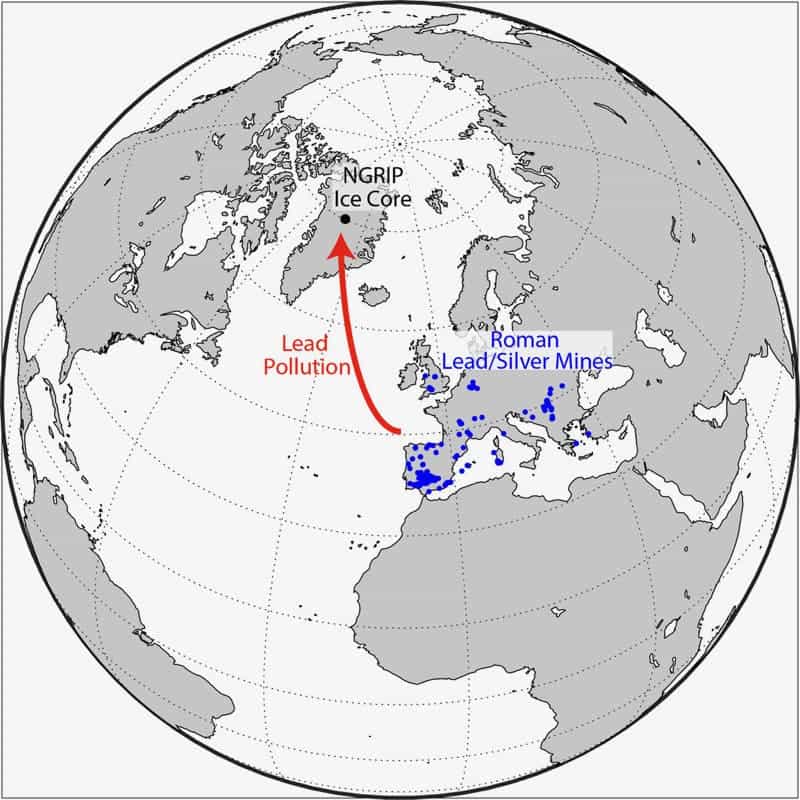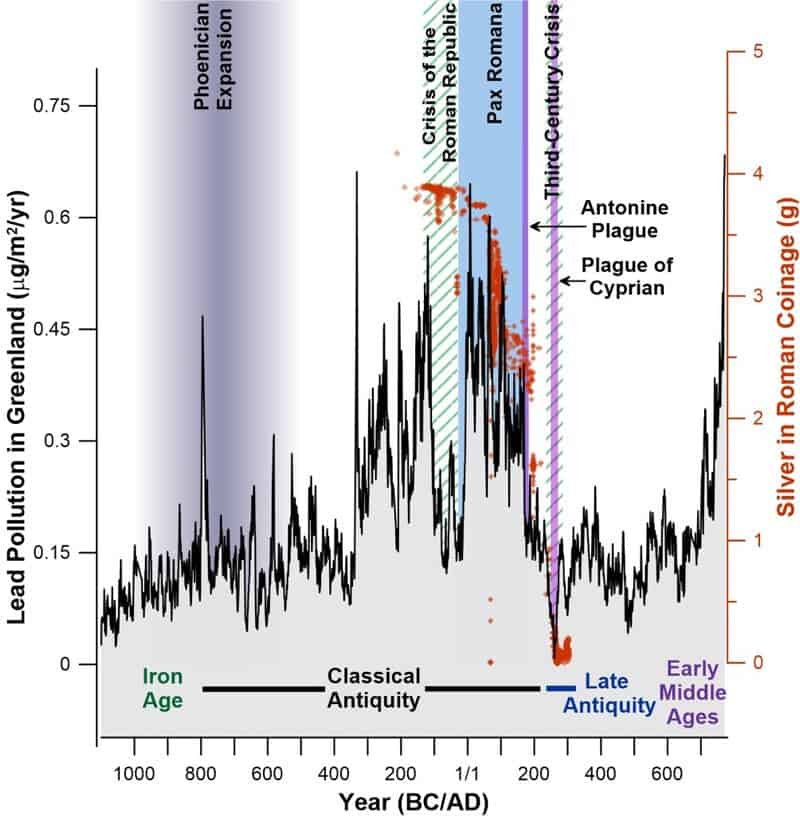Looking for information about the Romans and similarly advanced civilizations, researchers have turned to an unlikely place: the ice sheet of Greenland. Deep into this ice, researchers actually “saw” the rise and fall of these civilizations.

Just like we’re polluting the atmosphere with our emissions today, ancient civilizations also had their own sources of pollution — though at a much smaller scale. Some 2,000 years ago, the mining and smelting of lead-silver ores in Europe were the main sources of atmospheric pollution.
Year after year, these emissions flew into the atmosphere, settling down into the Greenland ice — and year after year, snow would fall down and cover them, capturing what can be viewed as an atmospheric time capsule. Today, researchers can sample cores from this ice and see what kind of emissions ancient civilizations produced. Think of it as a frozen time capsule for the atmosphere.
In a new study, a mixed team of scientists presents an analysis of such cores. They sampled ice cores from the North Greenland Ice Core Project (NGRIP) to measure, date and analyze European lead emissions that were captured in Greenland ice between 1100 BC and AD 800. They found that the emissions can be perfectly correlated with major events in Europe, and can even be used to assess how the continent’s economy was going.
“Our record of sub-annually resolved, accurately dated measurements in the ice core starts in 1100 BC during the late Iron Age and extends through antiquity and late antiquity to the early Middle Ages in Europe – a period that included the rise and fall of the Greek and Roman civilizations,” said the study’s lead author Joe McConnell, Ph.D., Research Professor of Hydrology at DRI. “We found that lead pollution in Greenland very closely tracked known plagues, wars, social unrest and imperial expansions during European antiquity.”
Because most of the lead emissions are associated with silver, which was a key component of most European currencies, traces of lead can serve as a key economic indicator (lead emissions were produced in the smelting of silver). In other words, prices were calculated in silver — so if you were doing well, you’d be using a lot of silver, which in turn meant you’d be producing a lot of lead emissions.
“Because most of the emissions during these periods resulted from mining and smelting of lead-silver ores, lead emissions can be seen as a proxy or indicator of overall economic activity,” McConnell explained.

Overall, results show that the first rise as early as 900 BC, when a civilization called Phoenicia started to expand trading routes into the western Mediterranean Sea. Phoenicians founded several influential city-states around the Mediterranean, including Carthage. Then, as Carthage and the Roman Empire started to rise, so too did emissions. Ultimately, as the Romans expanded their rule around Europe and the Mediterranean, emissions started to peak in the 1st and 2nd centuries AD, a period of economic prosperity known as the Pax Romana (the Roman Peace). But as the Roman Empire started to decline, so did the emissions.
“The nearly four-fold higher lead emissions during the first two centuries of the Roman Empire compared to the last decades of the Roman Republic indicate substantial economic growth under Imperial rule,” said coauthor Andrew Wilson, Professor of the Archaeology of the Roman Empire at Oxford.
Researchers also found that emissions dropped swiftly when plagues and wars struck the Romans — for instance, the Antonine Plague in the 2nd century (probably smallpox), and the Plague of Cyprian, in the third century. All in all, political and economic instability can be traced from the lead deposits in Greenland.
“The great Antonine Plague struck the Roman Empire in AD 165 and lasted at least 15 years. The high lead emissions of the Pax Romana ended exactly at that time and didn’t recover until the early Middle Ages more than 500 years later,” Wilson explained.

Their work depicts a timeline of Roman history, showing the highs and the lows. However, this is not a new idea. Researchers have known about this correlation since the 1990s when a study analyzed lead levels in Greenland ice using only 18 cores. This new study provides a much more thorough view, featuring more than 21,000 precise lead and other chemical measurements to paint an accurate picture.
“We believe this is the first time such detailed modeling has been used to interpret an ice-core record of human-made pollution and identify the most likely source region of the pollution,” said coauthor Andreas Stohl, Ph.D., Senior Scientist at NILU.
Journal Reference: McConnell et al. “Lead pollution recorded in Greenland ice indicates European emissions tracked plagues, wars, and imperial expansion during antiquity” https://doi.org/10.1073/pnas.1721818115



